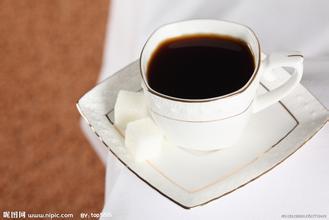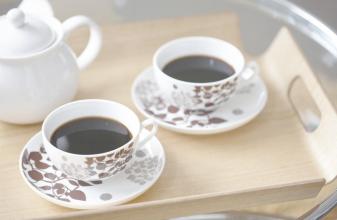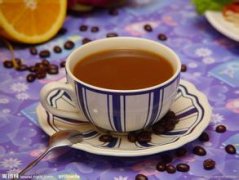All the knowledge of drip coffee
In the 19th century, coffee was brewed in three ways:
① The most traditional infusion brewing, that is, coffee powder mixed with water, let stand and pour out the coffee liquid or drink directly. This method of brewing coffee because it contains more coffee fine powder, not only in the mouth to form astringent feeling, powder will also plug in the teeth, not easy to clean.
Between 1810 and 1814, English-American Sir Benjamin Thompson, in conjunction with Count Rumford and an American scientist, developed an electric coffee pot (Percolator) that recycled hot water to brew coffee powder cakes. As the water in the pot has been in the process of continuous heating, extraction and cooling, the coffee produced is extremely bitter because of excessive extraction. Despite the obvious disadvantages of the three methods, under the scientific and technological conditions at that time, people could only continue to use such methods.
③ Use cloth bag to filter coffee grounds, although this method avoids the main shortcomings of soaking type, but it is cumbersome to clean, and after many times of use, the residue left in the gap of the bag will also affect the coffee flavor.
It was not until 1908, when a German housewife, Melitta Bentz, had the idea of drilling a hole under a copper pot, putting children's blotting paper, pouring coffee powder and filtering it, that she invented the prototype of the drip filter cup that is common today. In the same year, she applied for a patent and founded the "Melita Company", whose main single-hole filter cup was also very popular and was affectionately known as the "Melita Cup". Today, the century-old Melita Company is run by its grandchildren and has expanded into selling filter paper, coffee and coffee utensils.
Due to the single-hole design of the "Melita Cup," the coffee powder flows slowly during filtration. Therefore, this appliance is very suitable for medium and deep roasting and coarse grinding coffee. Therefore, this pure manual follicle method quickly takes root in eastern lands, such as Japan, China Taiwan and other places. Benz Melita's invention certainly adds color to a chapter in the history of coffee that is dominated by masculinity.
The first drip coffee machine
Wigomat
In 1954, German Gottlob Widmann also invented the world's first electric coffee drip filter Wigomat and applied for a patent. By the 1970s, a variety of drip filtration machines based on the Wigomat principle had gradually appeared on the market, but Wigomat remained popular. The typical advantage of filter paper drip cups is that they are easy to clean, while electric coffee drip filters have a significant improvement in controlling water temperature. The advent of both undoubtedly solved the drawbacks of electric coffee pots and accelerated their decline. Decline must be accompanied by rebirth, and drip coffee has evolved in more diverse ways.
Colorful world of trickling filters
Today, the drip coffee market has evolved from a single product line to a wide variety of fully equipped states.
Whether it is hand-brewed coffee or drip filter machines, with the development of science and technology and generation after generation of replacement changes, the following, Xiaobian collected several major drip coffee appliances in the current market for reference.
1
syphon pot
Surprisingly, among the many drip coffee appliances, the seemingly delicate and complex siphon pot appeared in Germany as early as the 1830s and was patented by a French woman Jeanne Richard in 1838. Siphon pot
It consists of two parts, the upper part is a cylindrical wide-mouth funnel, used to hold coffee powder cake, the lower part is a round-bottom volumetric flask, used to hold water. Use an independent heat source (usually an alcohol lamp or halogen lamp) to heat the volumetric flask at the bottom until the hot water boils. At this time, the air pressure in the volumetric flask rises and pushes the boiling water (about 93) in the flask to the upper container to mix fully with the coffee powder for extraction. At the same time, it is necessary to adjust the heating state of the bottom heat source to maintain the water content in the upper container to meet the brewing time. When the extraction is complete, the heat source is turned off or removed, the temperature at the bottom decreases, and the solution in the upper container returns to the bottom volumetric flask through the filtration equipment under its own gravity and atmospheric pressure. Pour out and enjoy. Traditional siphon pots use cloth filters, and today there are paper or metal materials, but they can only be used if you need to adjust the configuration of the siphon pot accordingly. Siphon pot drip filtration is a highly ornamental extraction method that makes full use of physical principles to make it seem more like a physics experiment.
2
Hand rinse filter cup
Since Ms. Melita broke the traditional filtration model in the early 20th century and invented the filter paper filter, the whole process of hand brewed coffee making
It was as if the industry had ushered in the peak of invention and creation. There are reforms and innovations in all elements of hand stamping.
Hand flushing kettle
The spout is usually a long, thin mouth that is easy to control, the body is moderate in weight, the insulation is good, and the lid has an opening for placing a thermometer. Cloud kettles and Bonavita temperature-controlled electric hand flushers, which are common in the market at present, are the best of this kind of design.
filter bowl
Spiral and basket shapes are more common along the inner arc. The number of filter ports has a single port, three ports or even multi-port design, and the number of filter ports will also affect the design of the bottom shape and the shape of the filter. The filter cup material is also diverse, the more common are metal, plastic, wood, quartz, glass and so on.
filter
There are three common materials in the market: metal, filter paper, filter cloth, each material will have a different impact on the taste of coffee.
Chemex
In 1941, Peter Schlumbohm invented the Chemex filter bowl in his laboratory, combining a separate filter bowl with a volumetric flask. The design was named "one of the most design-conscious products of our time" by designers at Illinois Institute of Technology and is housed at the Museum of Contemporary Art in New York.
3
drip filter coffee machine
It has been 62 years since the first drip coffee machine was invented, and today drip coffee machines have become very popular in the coffee market, especially in the domestic coffee appliance market, and there are even survey data showing that almost every American household has a drip coffee machine.
The advantage of the drip coffee machine is that it can quantify and process the production process of drip coffee, and then achieve repeated and stable production. However, in the current mixed home coffee market, there are some cheaper models, and it is difficult to guarantee high-quality products. The main reason is that the quality of temperature control system is not up to standard, which leads to the instability of extraction temperature. Therefore, many experts recommend choosing a machine certified by SCAA or SCAE when purchasing.
4
Smart Cup
Smart cup is a new type of drip filter invented by EK Int'l Company of China Taiwan in recent years, which combines the advantages of hand washing drip filter cup and method pressure pot. The appearance is the same as that of the drip filter cup. There is a special piston at the bottom. When the coffee is extracted in the filter cup, the filter cup is placed on the upper end of the cup. The piston automatically opens, and the coffee liquid will drip into the cup. Its principle is similar to that of the French press pot. However, it is widely welcomed because of its simple operation, easy to master and ability to retain the original flavor of coffee.
At present, the smart cups in the market can be roughly divided into two types, one needs to bring its own filter paper, the other is with its own filter screen, the latter is represented by China Taiwan brand Handybrew. The filter paper type smart cup should be rinsed with water as much as possible before use, so as not to affect the coffee flavor. It is worth mentioning that smart cups should not be ground too fine when used, resulting in filter clogging, excessive residual powder, affecting flavor.
Intelligent Future
Readers familiar with the coffee market know that new models are constantly on display at coffee industry exhibitions around the world every year, and the trend of incorporating new technological elements will also be reflected in the world of drip coffee.
The biggest change in people's lives in the Internet age is undoubtedly the double improvement of convenience and intelligence, and these trends have already taken root in the world of drip coffee.

Important Notice :
前街咖啡 FrontStreet Coffee has moved to new addredd:
FrontStreet Coffee Address: 315,Donghua East Road,GuangZhou
Tel:020 38364473
- Prev

What are the common misunderstandings in making coffee?
1. You don't buy fresh coffee. For the taste of coffee, serious coffee fans may be looking for a farmer.
- Next

Whether it's a boutique or a blend, coffee beans need to wake up after they've been raised.
Make the residual CO2 in coffee beans escape, and use the principle of oxidation to make the flavor more mellow and smooth. In order to remove the uncomfortable bitter taste of deep-baked beans, the waking time can be extended. If the light-baked beans have sufficient time to grow beans, the flavor development has been completed. If the waking time is too long, the aroma of coffee beans will be lost and the taste will be flat. Therefore, the time to wake up beans is inversely proportional to the time to raise beans. Italian blending
Related
- Beginners will see the "Coffee pull flower" guide!
- What is the difference between ice blog purified milk and ordinary milk coffee?
- Why is the Philippines the largest producer of crops in Liberia?
- For coffee extraction, should the fine powder be retained?
- How does extracted espresso fill pressed powder? How much strength does it take to press the powder?
- How to make jasmine cold extract coffee? Is the jasmine + latte good?
- Will this little toy really make the coffee taste better? How does Lily Drip affect coffee extraction?
- Will the action of slapping the filter cup also affect coffee extraction?
- What's the difference between powder-to-water ratio and powder-to-liquid ratio?
- What is the Ethiopian local species? What does it have to do with Heirloom native species?

